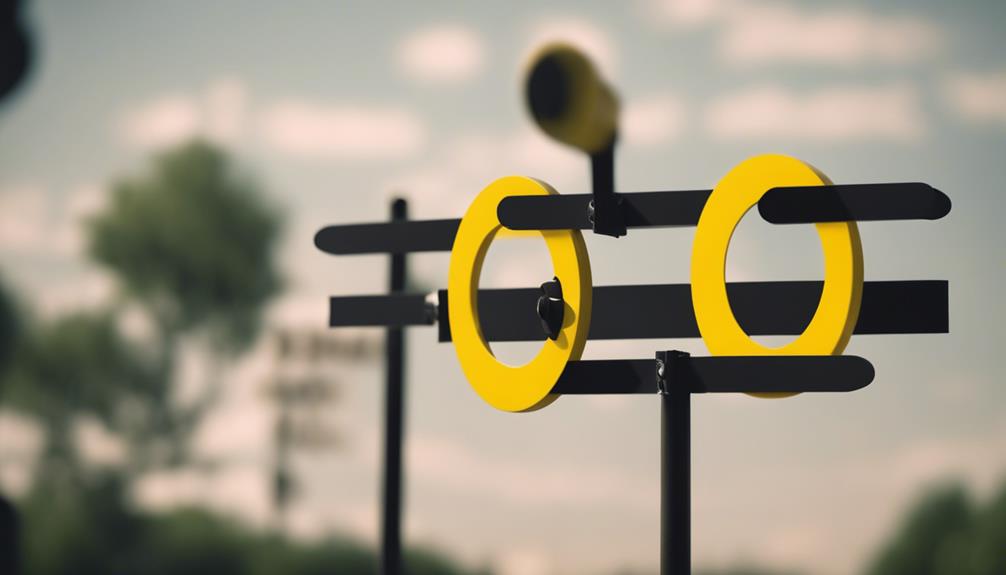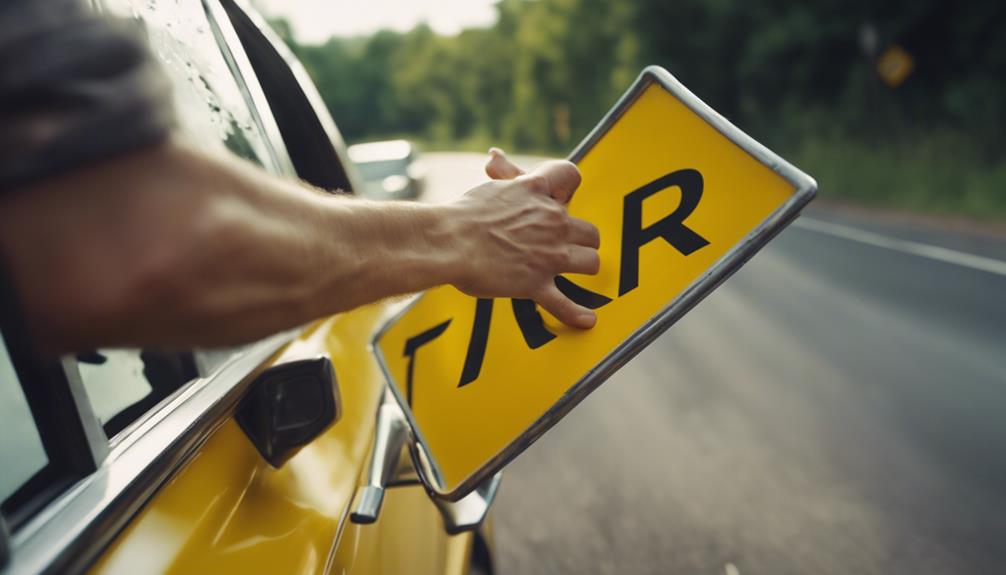Creating essential road signs is vital for enhancing road safety and guiding motorists successfully. Prioritize safety by wearing reflective vests and placing warning signs before installation. Choose a visible location on the right-hand side, several feet from the road shoulder. Select steel U-posts for durability and proper height. Measure pole depth and anchor securely for stability. Drill a precise hole above the sign and secure with appropriate bolts. Use reflective apparel for visibility and warning signs to communicate hazards. Effective sign communication and maintenance enhance road safety. Remember, each step contributes to a thorough guide for creating good road signs.
Key Takeaways
- Choose a visible location for the sign.
- Select a durable pole and surface type.
- Ensure proper pole depth for stability.
- Drill a hole directly above the sign for alignment.
- Secure the sign with appropriate bolts for stability.
Safety Precautions Before Installation
Before installing road signs, we always park our vehicles away from the road in the direction of traffic to guarantee safety. This precaution ensures that passing vehicles have ample space to maneuver without endangering our team.
Wearing reflective safety vests and apparel is important for visibility, reducing the risk of accidents. These garments make us easily identifiable to oncoming traffic, especially in low light conditions.
When placing warning signs, we aim to alert drivers to ongoing road work and potential hazards ahead. These signs serve as an essential communication tool, enhancing road safety for both drivers and workers.
Checking for underground cables or lines before installation is necessary to prevent damage and ensure the integrity of existing infrastructure. By taking these safety precautions seriously, we create a secure work environment that minimizes risks and promotes a smooth installation process for road warning signs.
Determine Sign Location
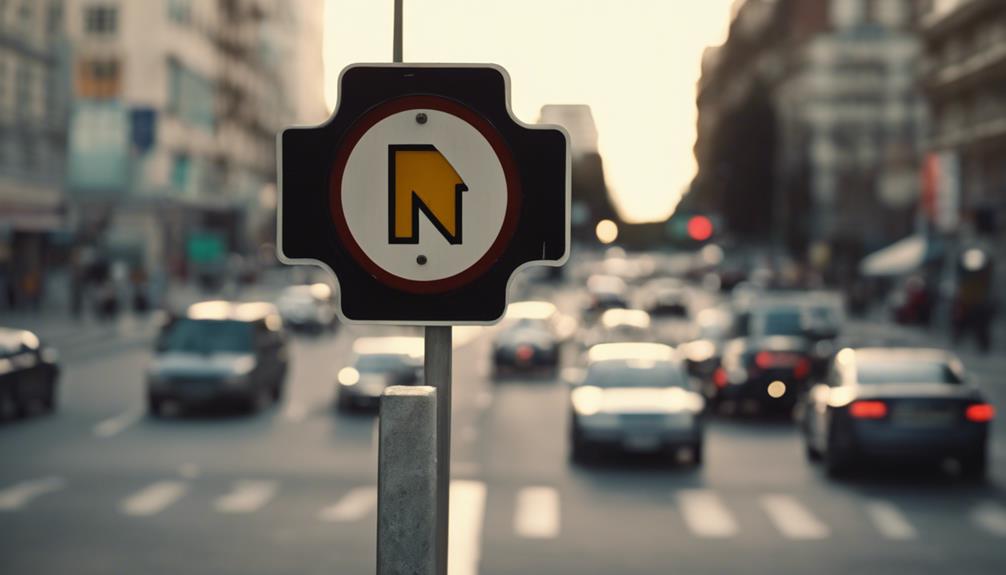
When determining the location of a road sign, we must choose a suitable spot that takes into account visibility factors. Placing the sign on the right-hand side of the road guarantees it's easily seen by drivers.
It's essential to position the sign several feet from the road shoulder to prevent obstruction and allow for clear viewing.
Choose Suitable Spot
To guarantee maximum visibility and effectiveness, we carefully consider the purpose of the sign when determining its location on the right-hand side of the road. Placing road signs several feet away from the road shoulder ensures visibility and allows viewers enough time to respond safely.
Before installation, it's important to check for underground cables to prevent any interference. In rural areas, signs are typically positioned around 5 feet from the ground, while in urban settings, they're placed at approximately 7 feet high.
Choosing the right pole, like durable steel u-posts, and suitable surface type is essential for a safe and cost-effective installation. By following these guidelines, we can make sure that road signs serve their purpose effectively and efficiently.
Consider Visibility Factors
Considering the purpose of a road sign is important in determining the best location for maximum visibility and effectiveness.
When situating street signs, it's essential to place them on the right-hand side of the road to make sure they're easily seen by drivers.
Positioning the sign several feet away from the road shoulder enhances visibility and safety, allowing motorists ample time to read and comprehend the message.
Prior to installation, it's crucial to check for underground cables or utilities to prevent any interference.
Choose Pole and Surface Type
When considering the pole and surface type for road signs, it's important to explore:
- Pole material options
- Surface mounting considerations
- Height and visibility factors
Different materials like steel U-posts offer durability against environmental elements, ensuring long-lasting road signs. By selecting the right pole and surface type, we prioritize safety, cost-effectiveness, and ideal visibility for road users.
Pole Material Options
Steel u-posts offer a durable and cost-effective solution for road sign pole materials, guaranteeing sturdy support for various environments. When selecting a pole material for a guide sign, it's crucial to take into account the durability and longevity it provides.
Steel u-posts are a popular choice due to their strength and resistance to environmental factors. These poles can withstand harsh weather conditions and provide reliable support for road signs. Additionally, steel u-posts are easy to install and maintain, making them a practical option for guide signs.
Surface Mounting Considerations
To guarantee the stability and safety of surface-mounted road signs, it's crucial to carefully consider both the type of pole and surface being used for installation. When choosing the pole, steel U-posts are an excellent option due to their durability and safety features. Make sure the selected pole is economical and safe for supporting the road sign.
For surface type, evaluate whether the sign will be installed on soil or concrete to determine the appropriate pole. Prioritize safety by drilling the pole 1.5 to 3 feet below the soil surface for added stability.
Remember to adjust the pole height based on the sign size and location, with rural signs typically placed around 5 feet from the ground and urban signs around 7 feet for the best visibility.
Height and Visibility
Considering the height and visibility of road signs plays a significant role in selecting the appropriate pole and surface type for installation to guarantee maximum safety and effectiveness.
When determining the pole type, the soil or concrete surface should be taken into account. Opt for a durable steel u-post to secure the sign's stability and longevity.
For rural areas, aim to mount the signs around 5 feet above the ground to enhance visibility on the road ahead. In urban settings, a height of approximately 7 feet is more suitable for best visibility.
To secure the pole, make sure it's set at a depth of 1.5 to 3 feet below the soil surface. Proper alignment and drilling of holes in the sign are essential for a secure attachment that withstands the elements.
Measure Pole Depth
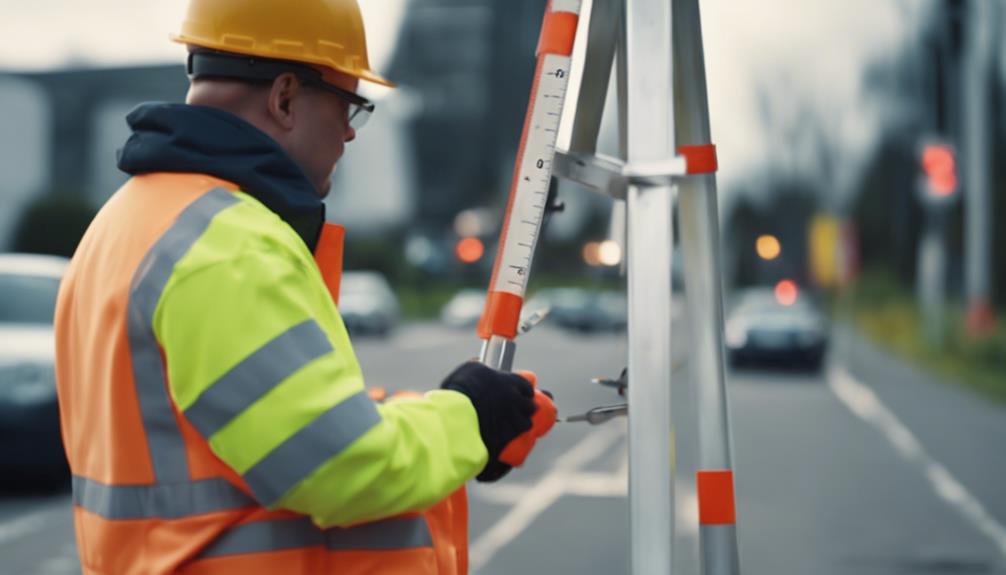
Measuring the depth of the pole is essential to guarantee stability and support for the road sign installation. Setting the pole 1.5 to 3 feet below the soil surface ensures the sign is anchored properly. This depth provides the necessary foundation to withstand external forces and maintain the sign's upright position.
Adjusting the pole's height based on the sign size is important for the best visibility. Rural road signs are typically installed around 5 feet from the ground, while urban area signs are placed around 7 feet high.
Proper pole depth measurement is necessary to prevent sign instability or leaning over time. Ensuring the pole is securely anchored in the ground helps maintain the integrity and longevity of the road sign installation. By following these guidelines and measuring the pole depth accurately, you can guarantee that the road sign stands tall and serves its purpose effectively.
Drill Hole for Pole

Let's ensure proper alignment and stability by drilling the hole for the pole directly above the road sign. Ensuring the hole is in the correct position is essential for a secure road sign installation. The height of the sign will determine where the hole should be placed on the sign for best stability. By aligning the hole with the pole, we can prevent any misalignment issues that may arise during installation. To illustrate the importance of this step, let's take a look at the table below:
| Hole Placement | Sign Height | Stability Level |
|---|---|---|
| Above Sign | Low | Moderate |
| Above Sign | Medium | High |
| Above Sign | High | Very High |
| Below Sign | Low | Low |
| Below Sign | Medium | Moderate |
Secure Sign With Bolts

To properly secure a road sign with bolts, make sure to use the correct tools and check the tightness of the bolts regularly. This will help prevent the sign from becoming loose or falling off, ensuring the safety and effectiveness of the road sign.
Proper maintenance of the bolts is essential for the longevity and functionality of the sign, so always keep an eye on their condition.
Use Proper Tools
Securely attaching a road sign to the pole requires utilizing head bolts or corner bolts for a durable installation. Vandal-resistant bolts are recommended for added protection against tampering. Choose bolts compatible with specialized nuts for a secure, long-lasting installation. Proper alignment of holes with the pole is essential for stability and visibility of the road sign. Following installation guidelines for drilling guarantees the sign is affixed securely and safely in place. Here is a table demonstrating the different types of bolts and their recommended usage:
| Bolt Type | Recommended Usage |
|---|---|
| Head Bolts | General sign installation |
| Corner Bolts | Securely fastening signs at corners or edges |
| Vandal-Resistant Bolts | High-security areas prone to tampering |
| Specialty Nuts | Ensuring a tight and lasting grip on the sign |
Check Bolt Tightness
After securely attaching the road sign using the appropriate bolts and nuts, the next step is to regularly check the tightness of the bolts to maintain the sign's stability.
Signs are usually secured with head bolts or corner bolts, chosen for their ability to keep the sign firmly in place. Opting for vandal-resistant bolts can prevent tampering and guarantee the longevity of the sign. It's essential to select bolts that are compatible with specialized nuts for added security.
Importance of Reflective Apparel
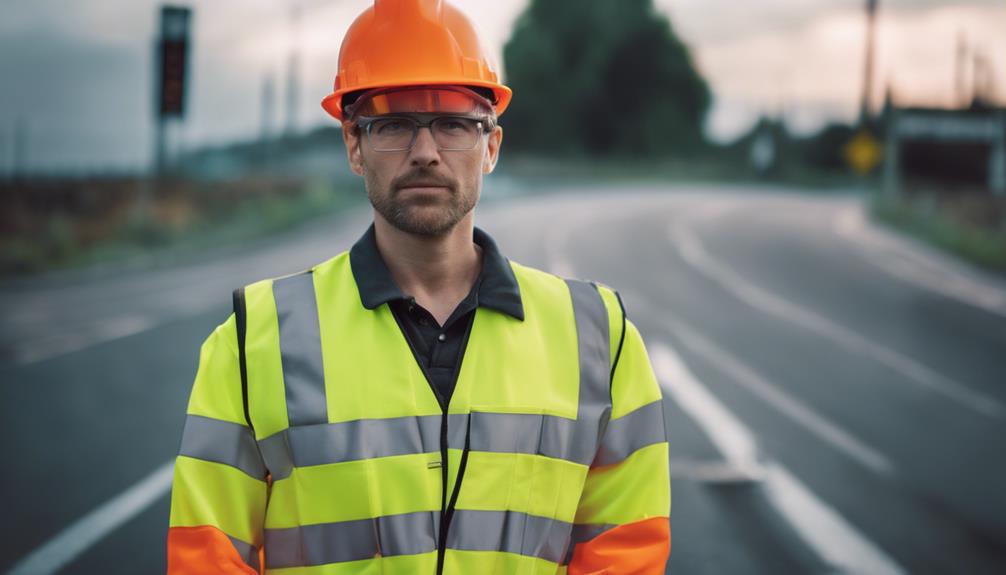
Emphasizing the importance of reflective apparel in road work safety, we highlight its essential role in enhancing visibility for both workers and motorists. Reflective apparel plays a vital part in reducing the risk of accidents in low-light conditions by making workers more visible to drivers.
ANSI/ISEA standards specify the requirements for different classes of reflective material to guarantee safety compliance. Clothing such as reflective vests with 360-degree visibility and bright fluorescent colors greatly improve recognition and awareness on the road.
Workers in construction zones, road maintenance, and emergency response situations must wear high-visibility clothing with reflective tape to maximize safety. Properly fitted reflective apparel increases the chances of being seen by drivers, ultimately preventing potential collisions.
Use of Warning Signs
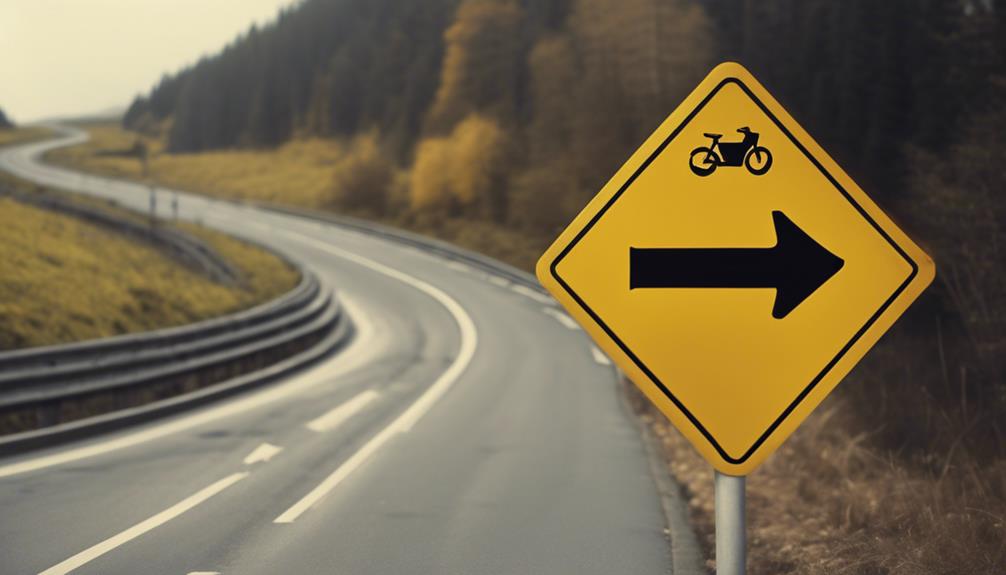
Warning signs play a critical role in alerting drivers to specific hazards or road conditions ahead. These signs are designed to communicate potential dangers using symbols or words, such as sharp curves, pedestrian crossings, or animal crossings. By understanding and obeying these warning signs, drivers can prevent accidents and guarantee a safe driving experience. It's essential for drivers to pay close attention to warning signs as they provide crucial information about the road ahead.
Proper placement and maintenance of warning signs are essential for preventing mishaps on the road. Well-placed signs give drivers ample time to react to potential hazards, reducing the likelihood of accidents. Additionally, regularly maintaining these signs ensures their visibility and effectiveness in conveying important information to drivers. Hence, drivers must be vigilant in observing and responding to warning signs to promote road safety for themselves and others. Remember, staying informed and attentive to warning signs can make a significant difference in preventing accidents and promoting safe driving practices.
Effective Communication Through Signs
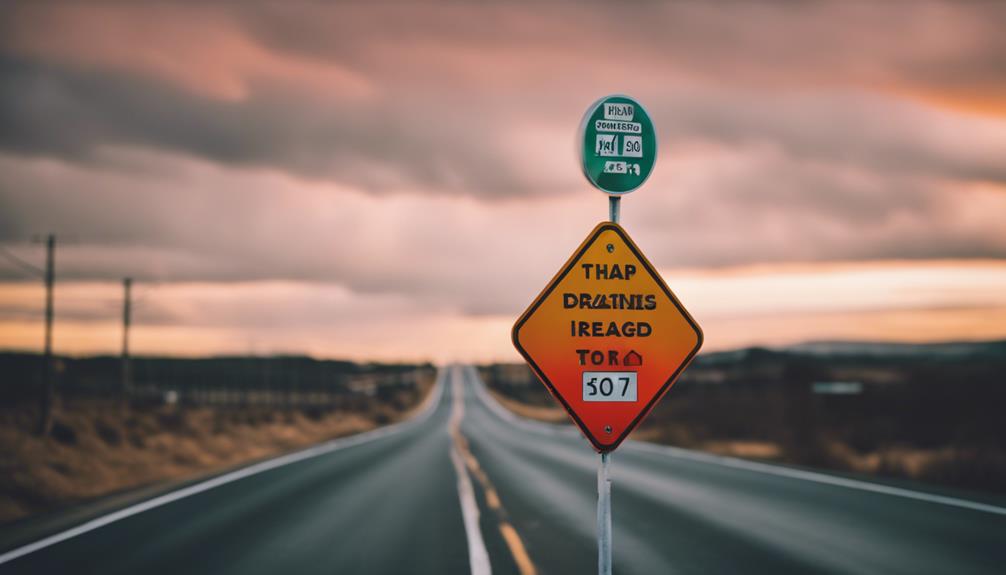
Effective communication through signs is key to ensuring road safety and efficient navigation for drivers. Road signs play an important role in conveying essential information quickly and clearly to motorists.
By utilizing symbols, colors, and shapes, road signs effectively communicate messages that help drivers make informed decisions on the road. Clear and concise messaging on road signs is critical as it reduces the risk of confusion and improves driver response time. For example, brown road signs meaning typically indicate recreational areas or points of interest, helping drivers easily locate parks, campgrounds, or historical sites. This color coding ensures that motorists can quickly distinguish between guidance, warnings, and informational signs, streamlining their decision-making process. Ultimately, the strategic use of design elements on road signs plays a crucial role in enhancing road safety and traffic efficiency.
Well-designed road signs with actionable instructions guide drivers effectively, enhancing road safety for all road users. Consistency in design elements and standardized formats on road signs promotes universal understanding and compliance among drivers, contributing to a more organized and safe driving environment.
Therefore, paying attention to the details of road signs and ensuring they're designed for maximum clarity is paramount in facilitating smooth and safe traffic flow.
Enhanced Road Safety Measures

To ensure road safety, consistent adherence to road signs is essential for all drivers. Road signs play a vital role in enhancing road safety by providing essential information that helps drivers navigate roads safely. Understanding and following road signs not only reduces the risk of accidents but also improves overall traffic flow.
Well-maintained road signs with clear visibility and proper placement are key factors in ensuring enhanced road safety measures. Compliance with regulatory, warning, and guide signs is necessary for creating a safer driving environment for all road users.
Regular maintenance, prompt replacement of damaged signs, and adherence to safety guidelines are critical for effective road sign implementation and furthering enhanced road safety measures. By respecting and obeying road signs, drivers contribute to a harmonious and secure transportation system that benefits everyone on the road.
Frequently Asked Questions
How Do You Memorize Road Signs?
To memorize road signs effectively, we suggest creating flashcards with images and meanings, testing regularly for retention. Use mnemonic devices to link signs with messages and practice identifying signs in various driving situations. This reinforces recognition skills for real-world application.
What Makes a Good Street Sign?
When crafting a good street sign, we focus on key elements like legibility, font size, color contrast, and proper placement. These factors guarantee quick comprehension by drivers, enhancing road safety.
Well-maintained signs reduce confusion and promote clarity. Consistency in design and messaging across all signs creates a unified communication system.
How Can I Read My Road Signs Better?
To read road signs better, we must understand shapes and colors for quick recognition. Different shapes signal various messages: octagon for stop, triangle for yield. State-specific designs add unique elements like state outlines or symbols.
Shapes like circles mean railroad crossings, diamonds warn of hazards. Knowing odd-numbered highways run north-south and even ones go east-west helps navigate efficiently.
Follow safe driving tips, like slowing down in pentagon-shaped school zones and planning long-distance routes.
What Road Signs Give Positive Instructions?
Road signs that give positive instructions include:
- 'Yield'
- 'Merge'
- 'Keep Right'
- 'Pedestrian Crossing'
- 'Hospital Ahead'
These signs guide safe and efficient driving behavior, promoting traffic flow and preventing accidents by directing drivers appropriately. Understanding and obeying these signs contribute to overall road safety, maintaining order and organization on the road.
Vital instruction signs are essential for safe driving practices and ensuring smooth traffic flow.
Conclusion
To sum up, ensuring proper road sign installation is vital for maintaining safety on our roads. By following the step-by-step guide outlined in this article, we can enhance communication, prevent accidents, and promote overall road safety.
Remember, taking the time to carefully install road signs is a simple yet essential way to contribute to the well-being of our community. Let's work together to make our roads safer for everyone.


